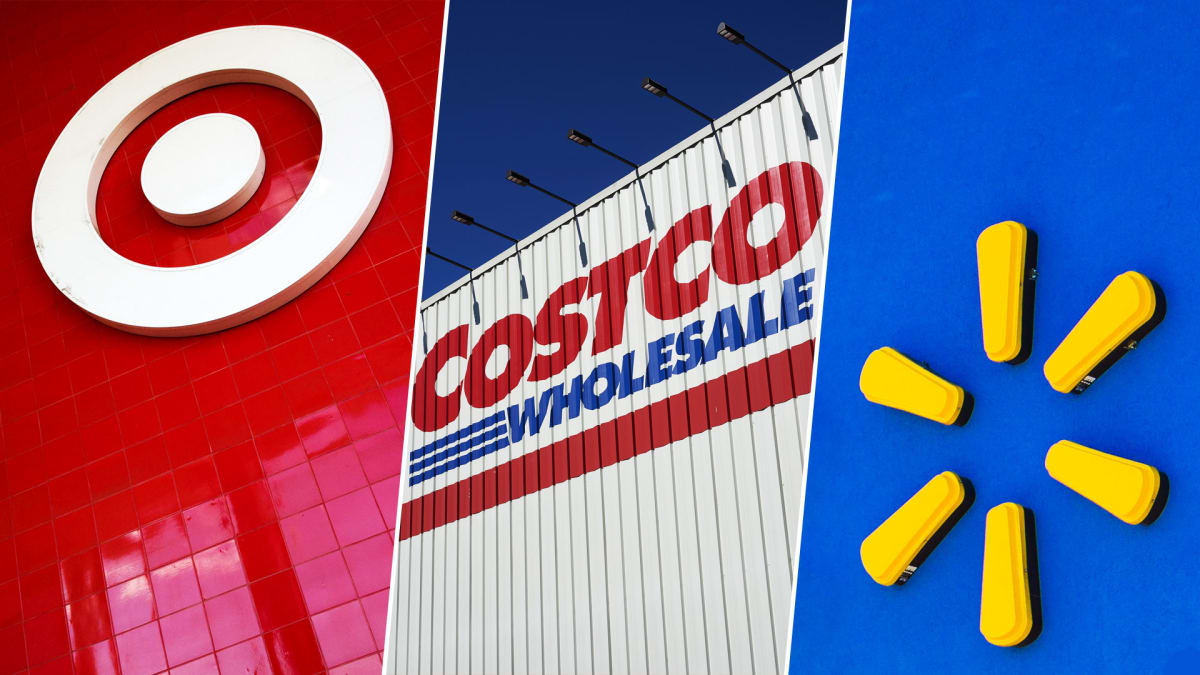
Warehouse-club customers have always been after value, but rising prices due to pandemic-related supply-chain issues have pushed price to top of mind for more people.
Consumers have heard that prices are higher and they have seen it at grocery stores, gas stations, and pretty much everywhere else. But their perceptions don't mirror reality.
People think inflation is much higher than it actually is. In July Americans perceived that grocery-store inflation totaled an annual rate of 22.8%, according to a survey from Dunnhumby, a data information service. But the government’s consumer-price report showed 13.1% inflation for food-at-home prices in the 12 months through July.
DON'T MISS: Yes, Grocery Prices Are Higher, But Not Nearly as High as You Think
When prices go up, even if they don't go up as much as people believe, consumers seek value. That's good news for retailers with a high value perception, like Costco (COST) and warehouse club rival Sam's Club.
Both chains and Sam's Club parent Walmart (WMT) have well-earned reputations for offering low prices. That also true of Target (TGT) and Amazon (AMZN), as all four companies have made pricing a key part of their branding.
For Sam's Club and Costco, low prices are literally the promise made to members in exchange for them signing up and paying a membership fee. With Target and Amazon it's less explicit, but consumers look to all four brands more when times are tougher.
Costco, however, doesn't just want to offer members a decent deal. It wants to have the lowest prices on key items and it has a clear plan to make that happen.

Image source: Xinhua/Ting Shen via Getty Images
Costco Checks Its Competitors (a Lot)
During the chain's second-quarter-earnings call Costco Chief Financial Officer Richard Galanti was asked about widening price gaps between Costco and some of its key rivals.
"Well, I think I said that they're as wide as they've ever been. I don't know that they've gotten wider. But we feel very good about where they are. And this is against direct competitors or other large boxes on certain categories, recognizing when it's a traditional retailer, there's a much bigger price gap to start with," he shared.
That's not an accident, especially when it comes to Sam's Club (although Galanti did not directly use that name).
"Despite the fact that we and another warehouse club essentially sell the same types of items, we want to make sure that on exact like branded items, we're a better price," the CFO added.
Those efforts also expand into areas where it's not quite a direct comparison since the rival chains might sell different sizes or versions of similar items.
"So on those 100, 150, that's where we look at that they're the most competitive. And whether it's Coke and Pepsi or Advil or Tide detergent or key items that everybody knows the price of or is that same item. There are plenty of items that are differing in quantity, quality, size, color, you name it, where we feel that, in some cases, we have a better value," he said.
In those less direct cases, Galanti just wants to be on the right side of customer perception.
"That's up to the customer to behold that. And so we just keep doing what we're doing; we're focusing on those competitive items and constantly figuring out how to drive more value in any item we do. How do we -- especially private label. But how do we upsize the pack while improving the price per unit within the pack," he added.
Costco Wants to Serve Its Members
Costco and Sam's Club have a different relationship with their customers than Amazon and Target do. People pay money to join a warehouse club and that comes with an implied promise that the club's buyers are working as much on behalf of the member as they are the retailer.
"Even when there was big inflation, how do we -- if there was a 10% increase in inflationary cost increase in something, how do we get the vendor to eat a little of it, we'll eat a little of it," Galanti shared.
That doesn't mean that the price won't go up. The CFO acknowledged that sometimes part of the price increase has to be passed on, but he also discussed how Costco works on behalf of its members.
"How do we also be on that logistically -- not logistically, but from a manufacturing standpoint and a packaging standpoint, how do we lower the price by a few extra percentage points by figuring out how to get x percent more cell units on a pallet by changing the configuration of the pack size. I think we have -- we focus more on that than anybody because we're taking our $230 billion or $240 billion in sales and dividing it by 3,800 items," he added.
A traditional chain like Target has hundreds of thousands of items on its shelves and by implication can't devote as much attention to each one.







